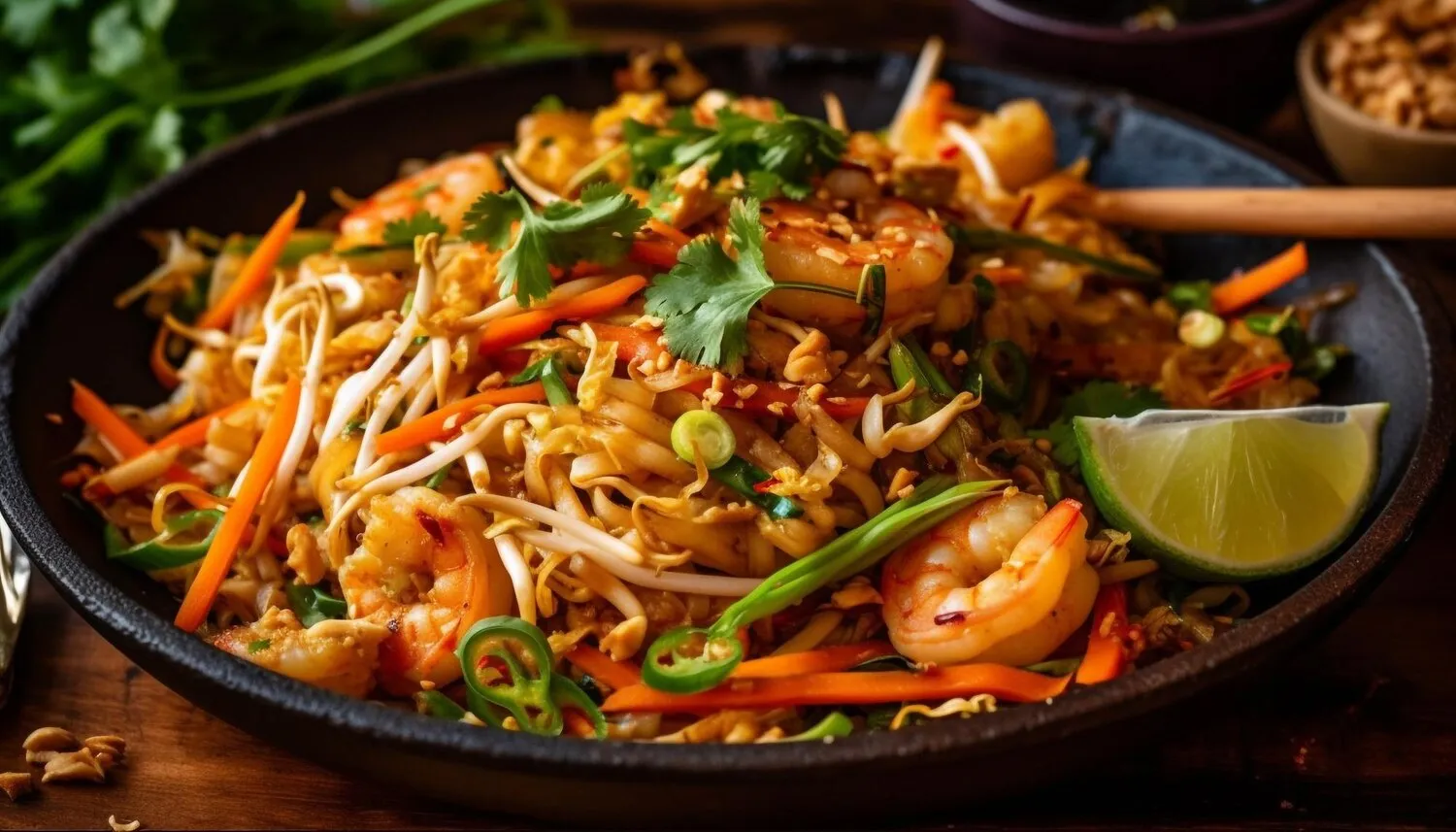
Penang Char Kway Teow
Flat rice noodles stir-fried with prawns, cockles, Chinese sausage, bean sprouts, and egg in a smoky, savoury-sweet sauce.
Nutrition Facts
* The % Daily Value (DV) tells you how much a nutrient in a serving of food contributes to a daily diet. 2,000 calories a day is used for general nutrition advice.
Char Kway Teow's origins can be traced back to Chinese immigrants in Southeast Asia, particularly those from the Teochew and Hokkien communities. It emerged as a humble hawker dish, utilizing inexpensive ingredients and reflecting the culinary adaptations of these immigrants to their new environment. The dish evolved over time, incorporating local flavors and ingredients.
Penang Char Kway Teow is more than just a dish; it's an integral part of Penang's culinary identity and street food culture, representing the island's multicultural heritage and vibrant food scene. It is a dish enjoyed by people from all walks of life.
Street Food Icon
Char Kway Teow is synonymous with Penang's famous street food scene. It is readily available at hawker centers and roadside stalls throughout the island, often cooked to order with a flourish.
Culinary Heritage
The dish reflects the fusion of Chinese and Malay culinary traditions, showcasing the multicultural influences that have shaped Penang's food culture. It represents the adaptability and resourcefulness of early immigrants.
Social Gathering Point
Hawker centers where Char Kway Teow is served are often vibrant social spaces where people gather to enjoy delicious and affordable meals, fostering a sense of community.
Penang Char Kway Teow boasts a complex flavor profile characterized by a balance of savory, sweet, and smoky notes, enhanced by the richness of seafood and the subtle spice from chili.
The savory element comes from the soy sauce and the wok hei (smoky flavor imparted by a hot wok), while sweetness is derived from the dark soy sauce. The prawns and cockles contribute a briny seafood flavor. Chili adds a touch of heat, which can be adjusted to individual preferences. The Chinese sausage provides a subtle sweetness and umami. Garlic and lard (or oil) provide a savory base.
Wok Hei is Key
The hallmark of a great Char Kway Teow is the 'wok hei,' the smoky char imparted by a very hot wok. Skilled hawkers know how to control the heat and toss the noodles to achieve the desired level of smokiness.
Fresh Ingredients Matter
Using fresh, high-quality ingredients, especially the prawns and cockles, is crucial for the best flavor. The freshness of the bean sprouts and eggs also makes a difference.
Properly Cooked Noodles
The kway teow should be cooked al dente - soft but still with a slight bite. Overcooked noodles will become mushy.
Balance the Flavors
The balance of sweet, savory, and spicy flavors is essential. Adjust the soy sauce and chili according to personal preference.
Explore additional Noodles dishes and restaurants
Explore NoodlesDiscover top dining spots and culinary experiences in Sydney.
Explore SydneyLearn more about the food culture, restaurant scene, and culinary heritage of Australia.
Explore Australia